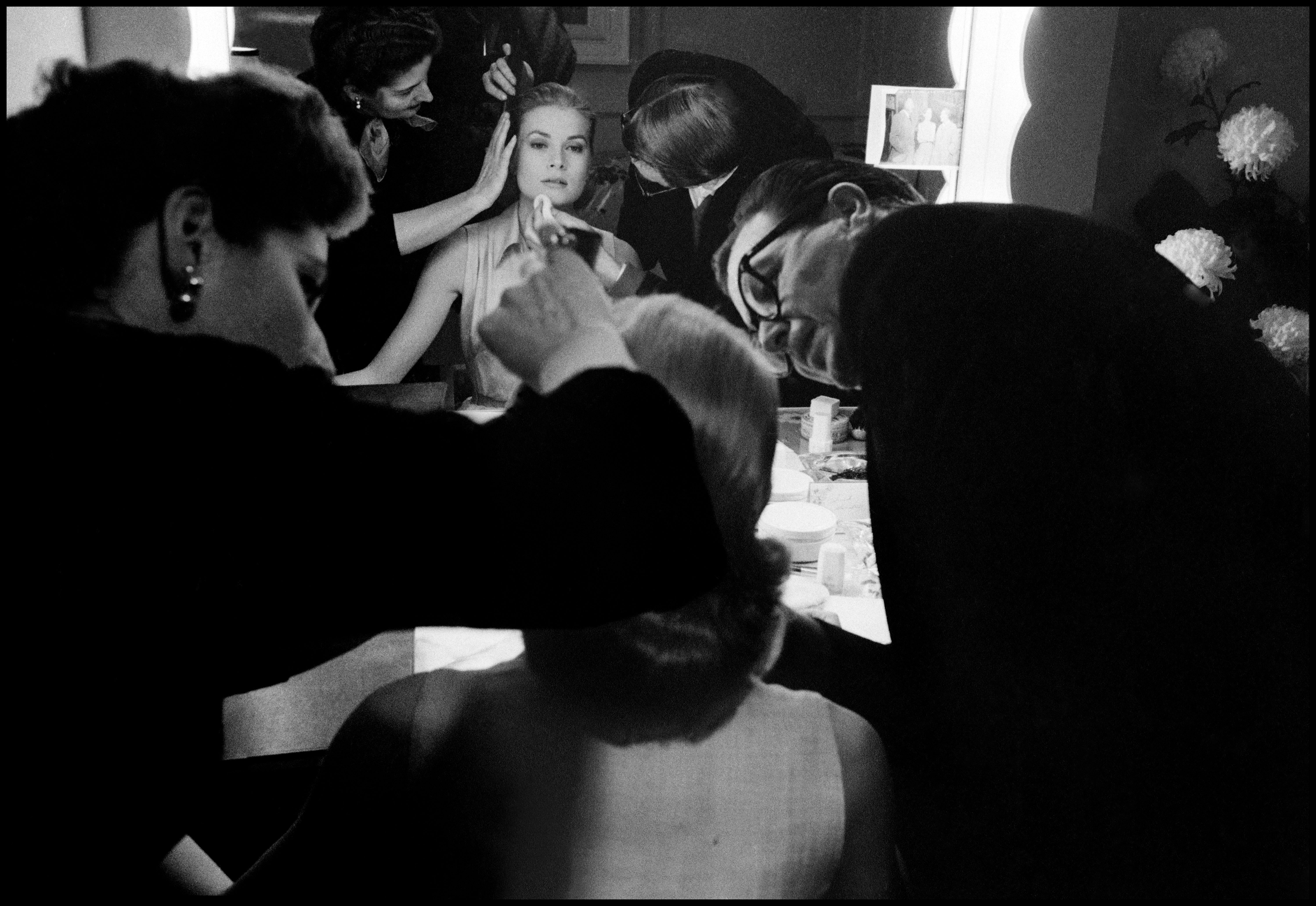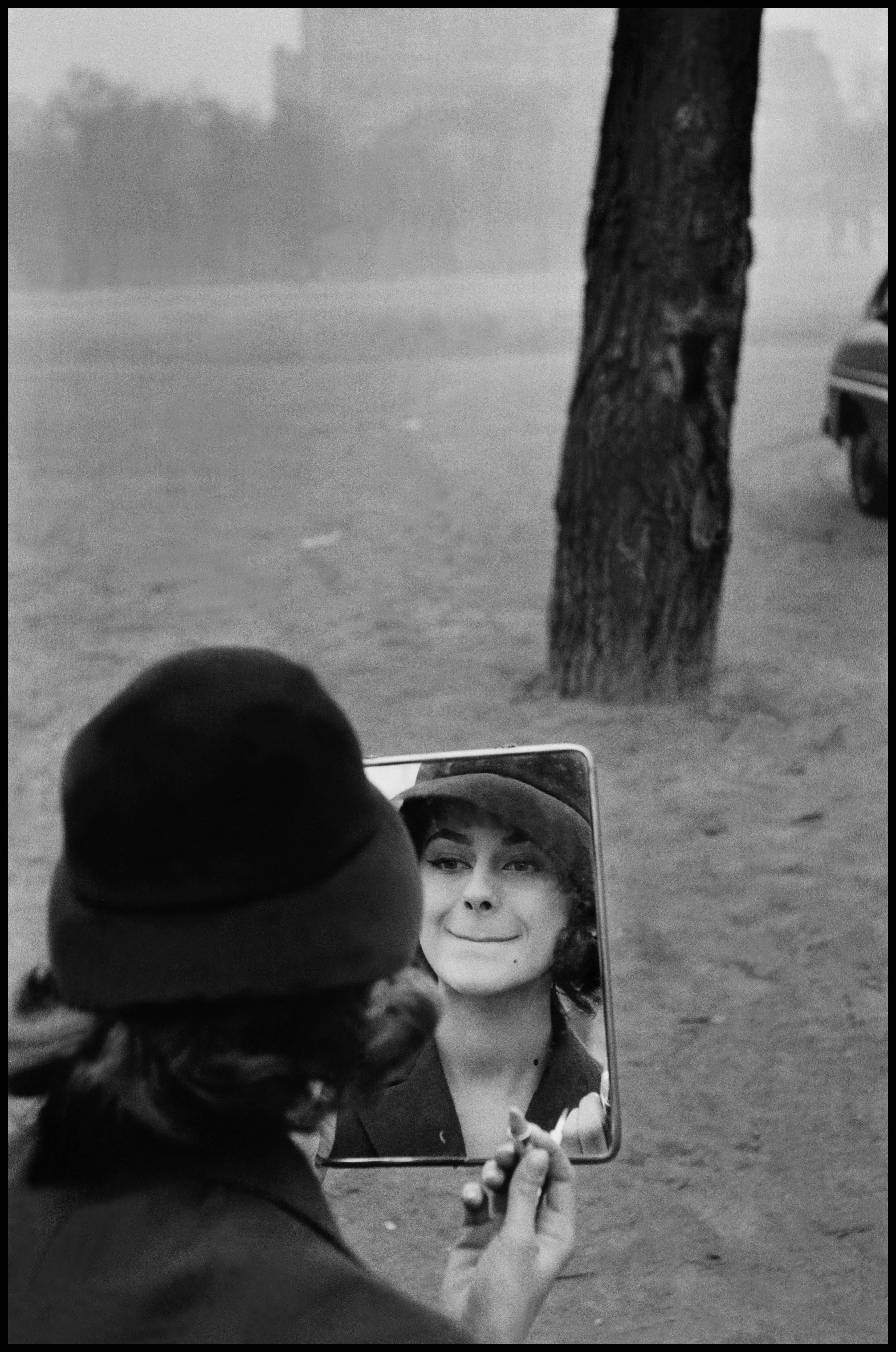
Swiss have to ask if they’re beautiful enough

“Beauty is in the eye of the beholder”. This age-old saying is less true than ever, if one considers the growth of the beauty industry. The sector that includes everything from cosmetics to plastic surgery profits from engrained notions of good looks.
It is estimated that every day, the Swiss population works its way through 64 tonnes of cosmetics and hair products – all in the name of looking better. For facial products alone, the Swiss spend SFr400 million ($428 million) per year.
In Bern, two museums have collaborated on an exhibition called “Bin ich schön? / J’suis beau?” (Am I beautiful?). It’s an important question in a country where it is common practice for prospective employees to include a photo with their CVs.
“Originally, the exhibition title was ‘What is beautiful?’ but we changed it because we wanted to approach the visitors directly with a personal question,” Kurt Stadelmann, curator of the Museum of Communication, told swissinfo.ch. His museum hosts the bulk of the show, with the neighbouring Museum of Natural History housing the rest.
“It’s a bit provocative, asking visitors to ask themselves if they’re beautiful. And we hope they get some answers in the exhibition,” Stadelmann said, pointing out that there are no mirrors on display. Instead, he hopes that people will find their inner beauty while looking at animals, dolls, magazine covers and other cultural references – such as a statue of the Virgin Mary and a Nazi propaganda film showing the “perfect” male athlete.
The International Society of Aesthetic Plastic Surgery compiled a list of the world’s most commonly performed cosmetic surgical procedures in 2010.
1 Lipoplasty/liposuction: 2,174,803
2 Breast augmentation: 1,506,475
3 Blepharoplasty (eyelid): 1,085,153
4 Rhinoplasty (nose): 985,325
5 Abdominoplasty: 681,344
6 Breast reduction (women): 549,994
7 Breast lift: 543,848
8 Facelift: 421,029
9 Otoplasty (ear): 242,271
10 Breast reduction (male): 235,947
Nip and tuck
The exhibition taps into the zeitgeist. In Switzerland, the number of plastic surgeons – whether reconstructive or aesthetic – has grown steadily over the years. Whereas in 1980, there were 24 plastic surgeons operating in the country and 44 ten years later, there are around 135 today.
swissinfo.ch asked plastic surgeon Daniel Knutti why people wanted to alter their appearances in the first place.
“They don’t necessarily want to change – they just want to look better or more beautiful. Or they want to enhance the beautiful parts of their body – basically to feel better,” answered Knutti, who opened his own practice in Biel in 1988.
He says that over the past ten years, there has been quite an increase in the number of breast augmentations performed.
“I also do quite a few facelifts, but that’s on the other side of the age scale. Especially women come in to get rid of wrinkles or sagging skin,” Knutti said. He notes that men account for just 10-15 per cent of his clients.
“I always say that women are more tolerant of men than vice-versa as far as appearance is concerned. A man may have grey hair and wrinkles, but he can still be very interesting to a young woman,” Knutti said.
Yet he does more procedures on men than he used to, especially around the eyes. “It just makes them look better – younger and more awake, more dynamic – without changing their personal appearance too much,” said Knutti, who himself has had the surgery on his upper and lower eyelids. Knutti has also had hair transplants.
A member of the Swiss Society of Plastic, Reconstructive and Aesthetic Surgery, Knutti is also on the board of the International Society of Aesthetic Plastic Surgery. Thanks to his global experience, he has been able to observe some differences in how people around the world would like to look.
“Asians definitely want more Caucasian features like a higher bridge of the nose, Western-type upper eyelids and larger breasts. Caucasians like slightly slanted Asian eyes. Arabs do not like their strong noses,” Knutti said.
Post-op, Knutti says it is not unusual for patients to tell him that their lives have changed as a result of cosmetic surgery.
“Even if the (physical) change is minor, it can change a whole lot in the life of the patient. Simply feeling more secure, happy and self-confident has such a big impact on the rest of daily life. It certainly has a substantial effect on success and well-being,” Knutti said.

More
Who’s the fairest?
Job prospects
This can translate into a better career outlook. In Switzerland, people applying for a job often include a photo with their CVs because they feel it is expected of them. According to José M San José, chief marketing officer of Adecco Switzerland – a human resources provider, this is because employers like to get a first impression of the applicant.
“Of course the profession is also a factor [whether appearance matters]. If it’s a job in production, then it’s not so important to see a photo. But if it’s a job in the service branch, then employers are glad to have one,” San José told swissinfo.ch.
He admits that good-looking people could have an edge once the pool has been narrowed down to a handful of equally qualified people.
“Then I could imagine that an employer would favour the CV of someone whose photo appealed to him more. So appearance could play a role in getting a job interview,” San José explained.
His company gives people tips on how to present themselves better, including grooming advice. Yet there is no substitute for a winning personality.
“For a sales job, for example, personal charisma is more important than appearance. So a person could be tall and slim with a great suit and hairstyle, but perhaps unlikeable,” San José said.
Anyway, beauty is very subjective, he notes.
“For career success, good grooming, a service-oriented mentality, friendliness and motivation are more important. You can’t make a career out of beauty unless you’re a model,” San José said.
Yet even a very ordinary person could look like a model with the right styling and photo editing techniques, as demonstrated in a video at the “Am I Beautiful?” exhibition – proof that it is senseless to compare yourself with the pimped-up images on billboards and in magazines.
“I’m glad if people leave the exhibition thinking, ‘I’m not really beautiful, but I’m attractive.’ I think this is the better way to see yourself because you can stay attractive until you’re 100 years old – that’s no problem,” said Stadelmann. “But to be beautiful until you’re 100 is much more difficult!”
The exhibition “Bin ich schön? / J’suis beau?” is a joint effort of Bern’s museums of communication and natural history.
It runs through July 7, 2013.
The number of plastic surgeons in Switzerland – whether they specialise in reconstruction or aesthetics – has grown steadily over the years.
1980 – 24
1990 – 44
2000 – 110
2011 – 135

In compliance with the JTI standards
More: SWI swissinfo.ch certified by the Journalism Trust Initiative















![The four-metre-long painting "Sonntag der Bergbauern" [Sunday of the Mountain Farmers, 1923-24/26] had to be removed by a crane from the German Chancellery in Berlin for the exhibition in Bern.](https://www.swissinfo.ch/content/wp-content/uploads/sites/13/2025/12/01_Pressebild_KirchnerxKirchner.jpg?ver=a45b19f3)













You can find an overview of ongoing debates with our journalists here . Please join us!
If you want to start a conversation about a topic raised in this article or want to report factual errors, email us at english@swissinfo.ch.